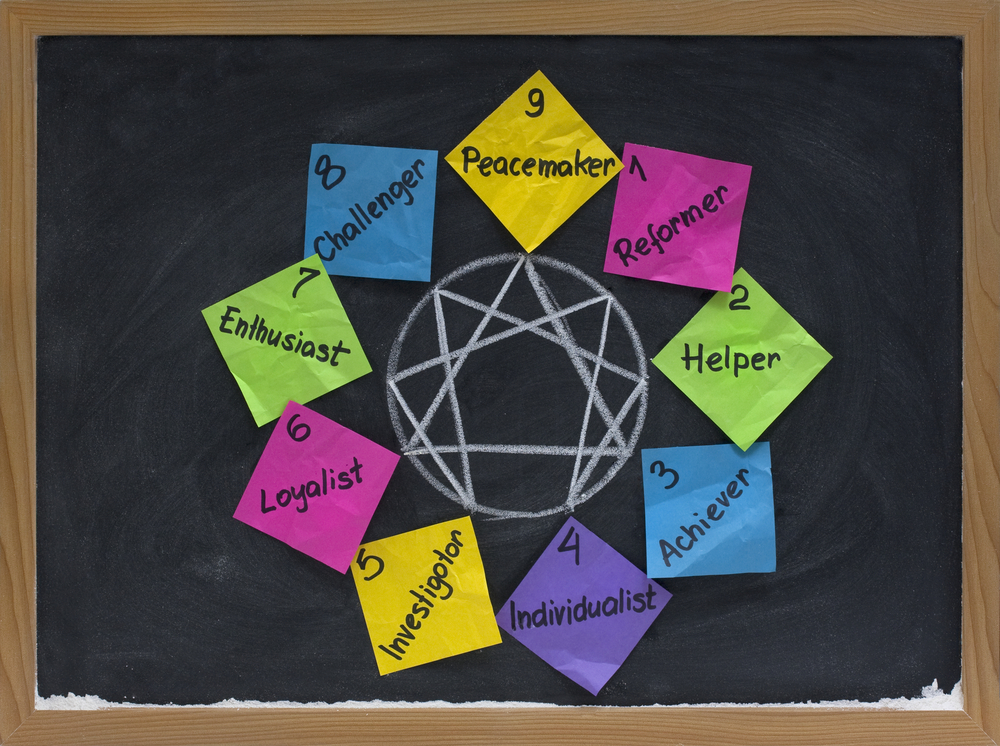
What type of person are you? Ask 100 people and you’ll get at least 100 answers. Yet personality typing offers a systematic look at traits, identities, and motivations. The enneagram is one of the latest, but there’s fascinating theory behind it. This quick guide explains what it is, how it works, and how people use it for personal growth.
The Enneagram Symbol
The enneagram is both visual and conceptual. The symbol itself is a nine-pointed geometric figure shaped like a star or lotus flower. Placed inside of a circle, this figure shows how each of the nine points connects to others. These nine points are arranged clockwise around the circle, starting with number one in the upper right and ending with nine at the very top. Verywell Mind shows the enneagram plus its nine numbered points.
The Types and Their Motivations
Each of the enneagram’s nine points represents a basic personality type. These types form the central core of our personalities and speak to what we value and desire. And of course, each type has a distinct focus. The Enneagram Institute breaks down the nine types and briefly explains their motivations:
- Type One: goodness and integrity
- Type Two: being loved and needed
- Type Three: validation through achievement
- Type Four: uniqueness and authenticity
- Type Five: knowledge and competency
- Type Six: security and support
- Type Seven: contentment and satisfaction
- Type Eight: independence and control
- Type Nine: inner stability and peace of mind
What Each Type Fears
Enneagram theory posits that the nine types’ primary desires fuel their actions and outlooks on life. You could think of each type’s motivation as its “mission statement.” But their fears also drive their thoughts and behaviors. These fears are usually the opposite of their core desires or worries that they won’t get what they need.
Most of the time, these fears are pretty self-explanatory. If type Fours seek a unique identity, they fear being ordinary and insignificant. Type Threes focus on success for their self-worth, so they try to avoid failure. Type Eights want control and independence, so they don’t want to feel powerless.
How Adjacent Types Impact Personality
Looking at the enneagram, you’ve probably noticed that each type sits between two others. Enneagram scholars call these adjacent two types “wings.” Depending on your age and self-development, these wings can influence your core personality.
How does this play out? Let’s look at type Nine as an example. Nines seek harmony and peace, but wings affect how this desire expresses itself. Someone who’s a Nine with an Eight wing may be a peacemaker. Yet the Eight wing lends a sense of strength and authority. Authors Don Riso and Russ Hudson called this subtype “The Referee” and for good reason–they dislike conflict and will make efforts to resolve it.
How Enneagram Arrows Work
Every enneagram type connects to two others. Most call these connections “arrows,” and they point to potential behavior patterns during growth or stress. The growth arrow may lead out of one’s comfort zone and to another type’s strengths. On the flip side, the stress arrow leads to another type’s bad habits.
The Enneagram Institute explains these growth and stress patterns, but an example can illustrate how they work. Type Sevens are fun-loving enthusiasts who dread boredom. Yet when they embrace growth, they learn to slow down and focus like a healthy Five. But place a Seven under stress and they may become condescending and critical like an unhealthy One.
Understanding the Psyche
Human beings are complex. What inspires one person may have no effect on another. And with almost eight billion people on our planet, picturing individual traits and idiosyncrasies can feel mind-boggling. Yet we’re often more alike than different. The enneagram offers one way to understand this by examining motivations and offers suggestions for growth.

